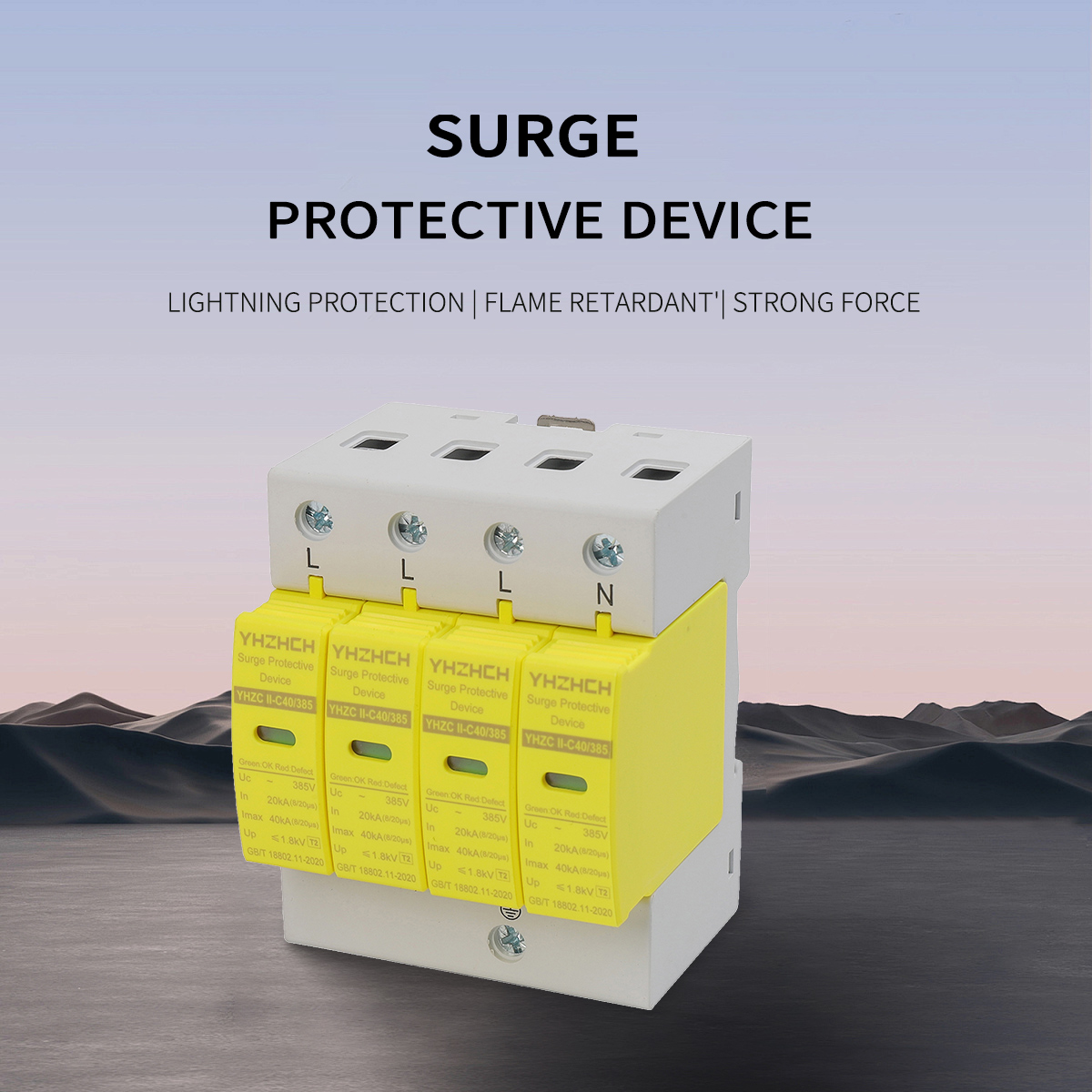The common types of surge protectors are as follows:
Classified by working principle
Voltage switch type surge protector: This type of surge protector exhibits high impedance when there is no surge. When the surge voltage reaches a certain value, its impedance will suddenly decrease, conduct current, and discharge surge energy to the ground. Common ones include discharge gaps, gas discharge tubes, etc. Its response speed is relatively slow, but it has strong current carrying capacity and can withstand large surge currents.
Voltage limiting surge protector: Under normal operating voltage, the voltage limiting surge protector exhibits a high impedance state. When the voltage exceeds its threshold, its impedance rapidly decreases, limiting the voltage within a certain range. Typical voltage limiting surge protectors include zinc oxide varistors, transient voltage suppression diodes, etc. Their response speed is fast and can effectively limit the amplitude of surge voltage, but their current carrying capacity is relatively weak.

Combination type surge protector: Combining voltage switch type and voltage limiting type surge protectors to leverage their advantages. In the early stage of surge, the current carrying capacity of voltage switching components is utilized to withstand large surge currents, and then the surge voltage is further limited by voltage limiting components to reach the range that the equipment can withstand.
Classified by installation location and purpose
Power surge protector: mainly used to protect the power system of electrical equipment, installed in distribution boxes, cabinets, sockets, and other locations. According to different application scenarios and voltage levels, it can be divided into primary power surge protectors, secondary power surge protectors, and tertiary power surge protectors. A primary power surge protector is usually installed at the main distribution box of a building to discharge high current surges generated by direct lightning strikes and induced lightning strikes; The secondary power surge protector is installed at the front end of the distribution box or important equipment to further limit the remaining surge after primary protection; The third level power surge protector is located close to electrical equipment such as computers, televisions, etc., providing more precise protection for the equipment.
Signal surge protector: used to protect various signal transmission lines, such as communication lines, network lines, video lines, etc. According to the different signal types and transmission rates, it can be divided into telephone signal surge protectors, network signal surge protectors, video signal surge protectors, etc. Signal surge protectors not only protect signal lines from surge damage, but also ensure the normal transmission of signals without affecting the quality and transmission rate of signals.
Antenna feeder surge protector: mainly used to protect the antenna feeder line in wireless communication systems, installed between the antenna and communication equipment. It can prevent lightning strikes and other surge voltages from entering communication equipment through the antenna feeder, protecting the RF ports and related circuits of the equipment. The antenna surge protector needs to have good RF characteristics to ensure that it does not affect the transmission performance of wireless signals while protecting the equipment.


